Introduction
First of all, before addressing this topic, it is important to realise that the skinhead scene is (logically) a very heterogeneous scene. Nobody has to wear certain clothes or adhere to any ‘rules’. We are all different people, with different tastes – and that’s a good thing. We don’t want to uniform ourselves and all look the same, but rather feel comfortable within the subculture. So don’t see this article as an exaggerated guide on how to dress, but simply as a collection of clothes that, at one time or another, have been worn like this. At this point I would also like to say a quick hello to ‘Creases Like Knives’ who runs a very good and informative blog about skinheads and everything that goes with them. I got a lot of information from there and I don’t want to leave that unappreciated.
Clothing style
Personally, I’ve been interested in the clothing of the original skinheads for a while now. The tough but at the same time smart style is, in my opinion, pretty much one of the best things there is. In some documentary or article, I can’t remember which, someone described the style as ‘50% proletarian and tough’ and ‘50% gentleman’ – I think that sums it up perfectly. But how did this style come about? Well, you can probably argue about that. There are many theories and statements about it on the internet, but what is right or wrong can hardly be proven as there is no study on it. We have pictures, documentaries and witness statements to work with. But the fact is that the skinhead style is a fusion of the style of the Jamaican Rude Boys and the typical English subculture of the Mods (or Modernists). I think everyone reading this article is probably aware of this, so I decided to focus on the subtleties and nuances of especially two pieces: the „Crombie“ and „Denim Jacket“.
The ‘Crombie’ That Isn’t Really A Crombie At All…
Let’s start with the absolute top item of clothing in skinhead fashion: the so-called ‘crombie’. Everyone calls it that, but why? When you get right down to it, this term is rather ‘colloquial’ as it is used in our subculture to describe all woollen coats. Many skinheads attach importance to a breast pocket to present a handkerchief and two large pockets on the front of the coat, but of course there are also other variations and cuts, all of which have their raison d’être. Originally, however, ‘Crombie’ is a brand of a textile manufacturer founded in Scotland in 1805. According to the company’s website (which still exists today), it is one of the oldest brands in the world and, of course, best known for its coats. It’s interesting, in relation to the skinhead subculture, when you consider that Crombie didn’t even produce its own coats until 1985! So nobody had a Crombie in 1969? That’s probably correct, but it doesn’t mean that no coats were worn. According to other sources, the early skinheads mainly wore mac coats and sheepskins — no Crombies, but that’s also up for debate.
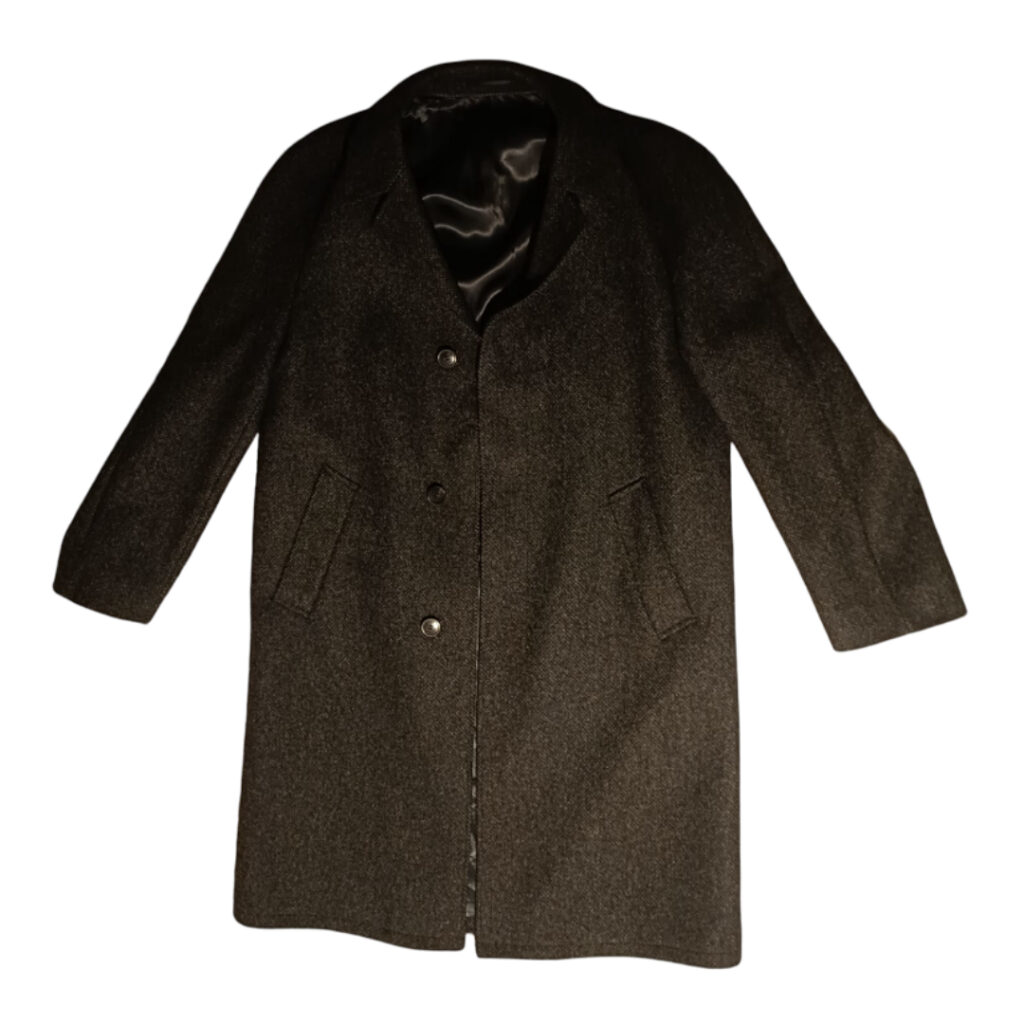
As already mentioned, Crombie simply became a synonym for a chic overcoat that reached to the knee or slightly above in length (probably due to its high profile at the time). I also dare to doubt that any working class skinhead would have had the necessary small change to finance a real Crombie, as the coats are still extremely expensive today. In the meantime, the Crombie company has even gone so far as to produce customised coats only after inviting you to buy one in the first place. You are therefore unlikely to find such coats in fashion shops. However, if you’re lucky, you can still find Crombie overcoats online – so keep your eyes peeled! My first ‘Crombie’ was a generic overcoat from a local clothes shop, I still have it today and that’s probably how the early skinheads got their hands on their first coat back in the days. Nowadays we just have access to information that they didn’t have back then. People were quite pragmatic and just wore what they could get and, above all, what they could afford.
Denim Jackets – Science Of Their Own
It may sound strange, but denim jackets feel like a science in themselves. Nowadays a fashion trend but also a timeless classic in the skinhead subculture. In fact, not all denim jackets are the same. Two Japanese men named Yutaka Fuji-Haras and Naoki Kawamatas have even gone so far as to write a book about the Levis Type I, II and III denim jacket. You can buy the book somewhere on the internet for around 100€, how nice! The Type I and II jackets from Levis are almost ‘meaningless’ nowadays. You can buy vintage jackets for a fortune and hardly anyone wears them. Probably the best-known model is the Type III, which can also be seen in most historical skinhead pictures.

The 20MJL from Wrangler is also frequently seen, as is the Lee Rider, which used to be particularly popular with railwaymen. But let’s stay with the best-known denim jacket, the Type III from Levis, which is probably the best-known ‘skinhead denim jacket’.It is still in production today and enjoys great popularity (because it also looks damn good). This jacket didn’t used to have side pockets, so if you really want every detail to be right, you should keep an eye out for jackets like this. A ‘fun fact’ that not too many people know: Some skinheads used to remove the leather patch from the back of the jacket and sew it on the left over the breast pocket. Why? Good question, probably to show off to friends that you have a real Levis and maybe also because back in the days Levis denim was quite expensive and hard to get hands on since it was imported from the US. You can find historical photos of skinheads on the internet and on social media where you can see this label on the front of the chest.
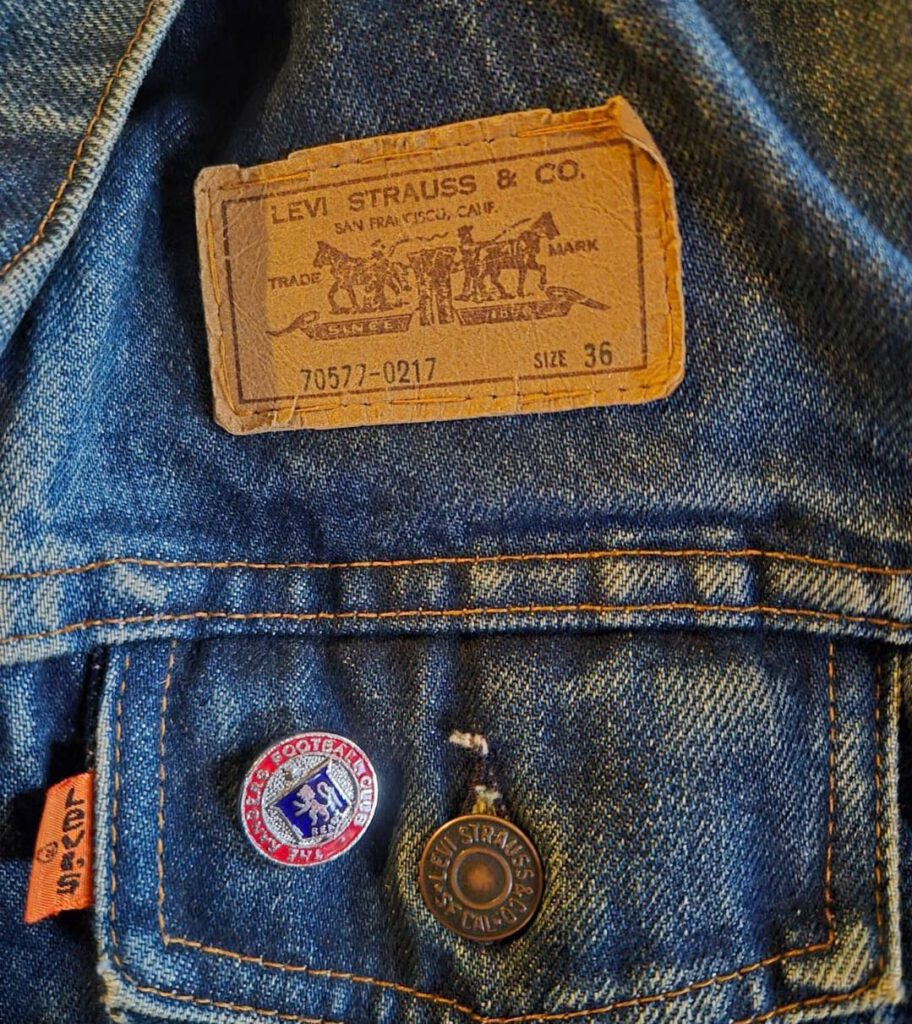
The Levis Type III has been available in many different variations over the years. The number on the leather label (e.g. 70500 04) can also be used to find out when which jacket was produced. Among other things, professionals can date the jackets fairly accurately based on the seams, buttons and many other small details. According to the internet and a friend of mine, denim jackets from Wrangler were mainly worn by skinheads in the north of England, while in the south and also in Lodon many skinheads wore Levis ones. Some also claim that the style of clothing varied depending on the neighbourhood, for example in London. What exactly is true or not is only partially verifiable. In fact, there’s not much more to say about denim jackets unless you go into great detail, which even I get bored of at some point.
To summarise: So if you want every detail for little money, buy a second-hand Levis Type III from the 80s/90s and sew the leather label over one of the breast pockets. Whether this looks particularly smart or not is up to you, but my denim jacket is definitely due for a makeover – but as I’ve already mentioned, I’m also just a bit crazy.
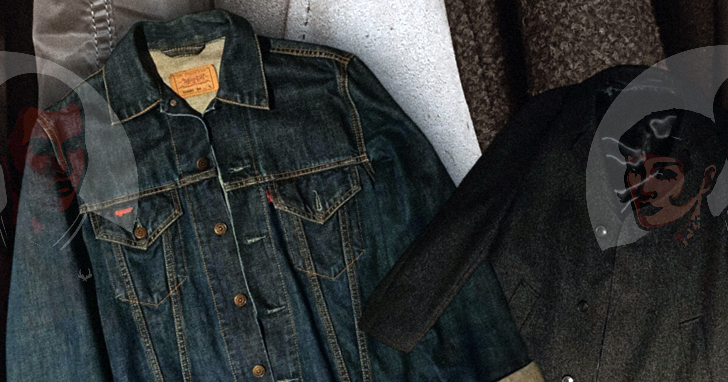
 Lee
Lee  Poppy
Poppy 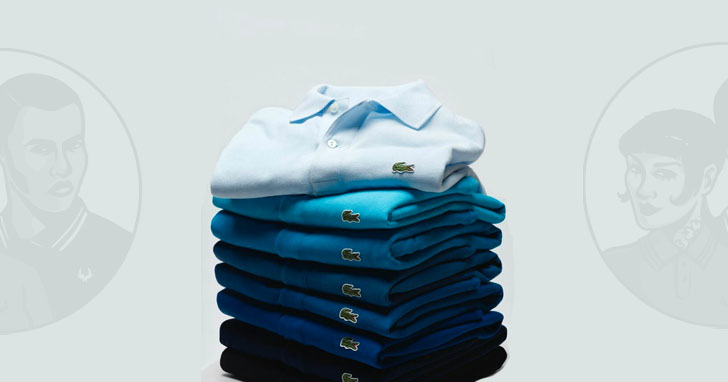 The Lacoste story
The Lacoste story 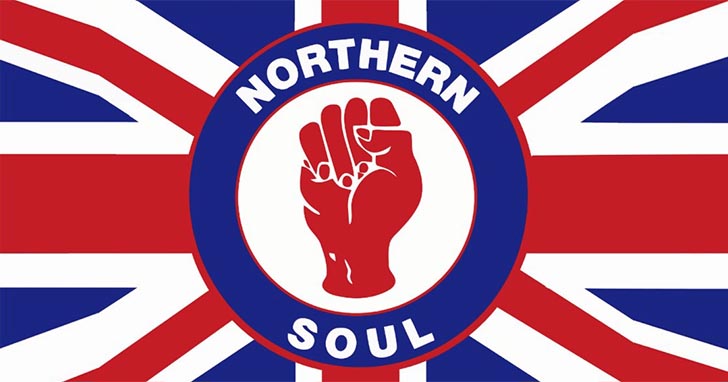 The Northern Soul story
The Northern Soul story
Great read! Well written Jonas!